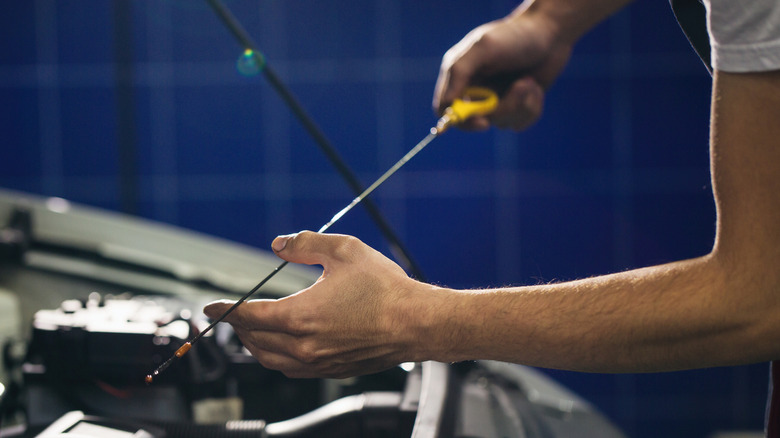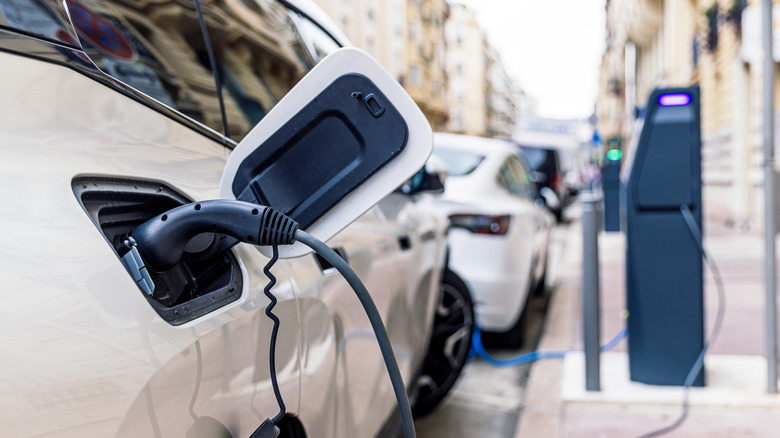Why Don't All New Cars Come With Oil Dipsticks Anymore?
Keeping an eye on your car's oil is essential to maintaining its health and longevity. Other than getting the oil itself changed every few thousand miles, you should also be consistently checking the oil levels to ensure that nothing is out of the ordinary. The quickest and easiest way to inspect this has been through the use of an oil dipstick, a lengthy metal apparatus that sits inside and can be pulled out of your car's cylinder block to help tell you if your oil levels are running low. However, these handy attachments have been noticeably absent from some recent car models.
A number of manufacturers such as Mercedes-Benz and BMW have begun to trade in the traditional oil dipstick for an electronic measurement system that detects exactly how much oil is present. While this implementation may at first appear to be the result of cost-cutting or space-saving measures as has been the case for spare tires as of late, companies assure that this move is being done as a way to adapt to consumer habits.
Speaking with Automotive News Canada in 2024, Mercedes-Benz spokesperson Andrew Brudnicki stated, "With digital oil level measurement, customers can easily monitor their vehicle's oil level in their vehicle's driver display and receive timely alerts if oil level is outside normal limits. This proactive approach helps to avert potential engine damage." Brudnicki added that the new method gives drivers a more accurate picture of how much oil to add.
Not everyone sees the benefit of relying on this system
Unsurprisingly, the choice to get rid of oil dipsticks from many modern cars has not been met with favor from longtime auto enthusiasts. While some may chop up this resentment to people being stuck in their old ways, it's hard to say that there's no merit to these comments whatsoever.
Individuals such as Peter Nelson of The Drive found that the oil level detection system of a 2021 Toyota GR Supra 3.0 wasn't as cut and dry as he would have preferred. The driver described the inconsistency of the system's measurement capabilities, finding that it detected far more oil than he added after only putting in slightly more than the minimum amount. Additionally, he found waiting for the car to measure the oil levels tedious and could see it slowing down any particular trip.
There are also concerns surrounding the reliability of these sensors in every situation. As with any technological component on your car, a sensor is always prone to failure, especially when taking into account that they are exposed to engine oil and extreme heat on a regular basis. And having to replace such an essential component would likely not come cheap. At the end of the day, while there's no way to turn back the clock, it would seem best that car manufacturers provide varied oil detection options for novices and experts alike.

